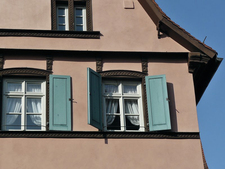-
Topics
subnavigation
Topics
Electromagnetic fields
- What are electromagnetic fields?
- Static and low-frequency fields
- Radiation protection relating to the expansion of the national grid
- High-frequency fields
- Radiation protection in mobile communication
Optical radiation
Ionising radiation
- What is ionising radiation?
- Radioactivity in the environment
- Applications in medicine
- Applications in daily life and in technology
- Effects
- What are the effects of radiation?
- Effects of selected radioactive materials
- Consequences of a radiation accident
- Cancer and leukaemia
- Genetic radiation effects
- Individual radiosensitivity
- Epidemiology of radiation-induced diseases
- Ionising radiation: positive effects?
- Risk estimation and assessment
- Radiation protection
- Nuclear accident management
- Service offers
-
The BfS
subnavigation
The BfS
- About us
- Science and research
- Laws and regulations
- BfS Topics in the Bundestag
- Links
Legal regulations for the protection against radon
- By the end of 2020, the Länder have to determine according to the Radiation Protection Act in what areas a great deal of radon in buildings has to be expected.
In these areas, different regulations apply to several building types:
- For already existing private homes, owners and residents can take measures to reduce the radon concentration inside the building on a voluntary basis.
- For new private buildings, owners are committed to largely prevent by taking structural measures that radon can enter the building.
- If the radon concentration at workplaces is above 300 becquerel per cubic metre, measures must be taken to reduce the radon concentration inside the building.
Protection against radon is regulated in the Radiation Protection Act. The Act provides for various measures to protect human health in areas with high occurrence of radon.
Apart from smoking, inhaling radon is among the greatest risks to develop lung cancer. Radon may rise up from the building ground into buildings, where it may accumulate.
In the Radiation Protection Ordinance, a value of 300 becquerel per cubic metre is stipulated as guideline for an enhanced concentration of radon indoors. If this so-called reference value is exceeded, measures should be taken to reduce the radon concentration inside the building.
Areas with enhanced radon concentrations
By the end of 2020, the Länder have to determine and announce in what areas a particular large amount of radon in buildings has to be expected. This means that in these areas the reference value of 300 becquerel per cubic metre is exceeded in a “considerable number of buildings with living areas or workplaces"
, according to the Radiation Protection Act.
Different regulations for the protection against radon apply here, depending on whether it is a residential building or a workplace.
Private, already existing residential buildings

Private, already existing residential buildings
For already existing private homes, owners and residents can take measures on a voluntary basis to reduce the radon concentration inside the building. For this type of buildings, the Radiation Protection Act does not provide any duty to act.
The competent federal and Länder authorities are tasked with informing citizens about health risks due to radon and to convince them of taking precautions.
Private new buildings

Private new buildings
For new private buildings, owners are committed to largely prevent through structural measures that radon can enter the building.
What structural measures this may be is stipulated in the Radiation Protection Ordinance (only in German)
It is planned to revise the Ordinance accordingly.
Workplaces

Workplaces
If buildings are used for work activities, the persons responsible for the respective workplaces are committed to measure the radon concentration at workplaces located in the basement and on the ground floor. If the radon concentration at these workplaces is higher than 300 becquerel per cubic metre, measures must be taken to reduce it.
The same applies to special workplaces where high radon concentrations may occur frequently, such as in mines and in certain waterworks.
Further steps
Until 2020, the Länder must determine and announce the areas with high radon occurrences. Parallel to this, the requirements for measures for the protection against radon in residential buildings and at workplaces are being developed in rules and regulations such as the Radiation Protection Ordinance.
State of 2018.06.20


